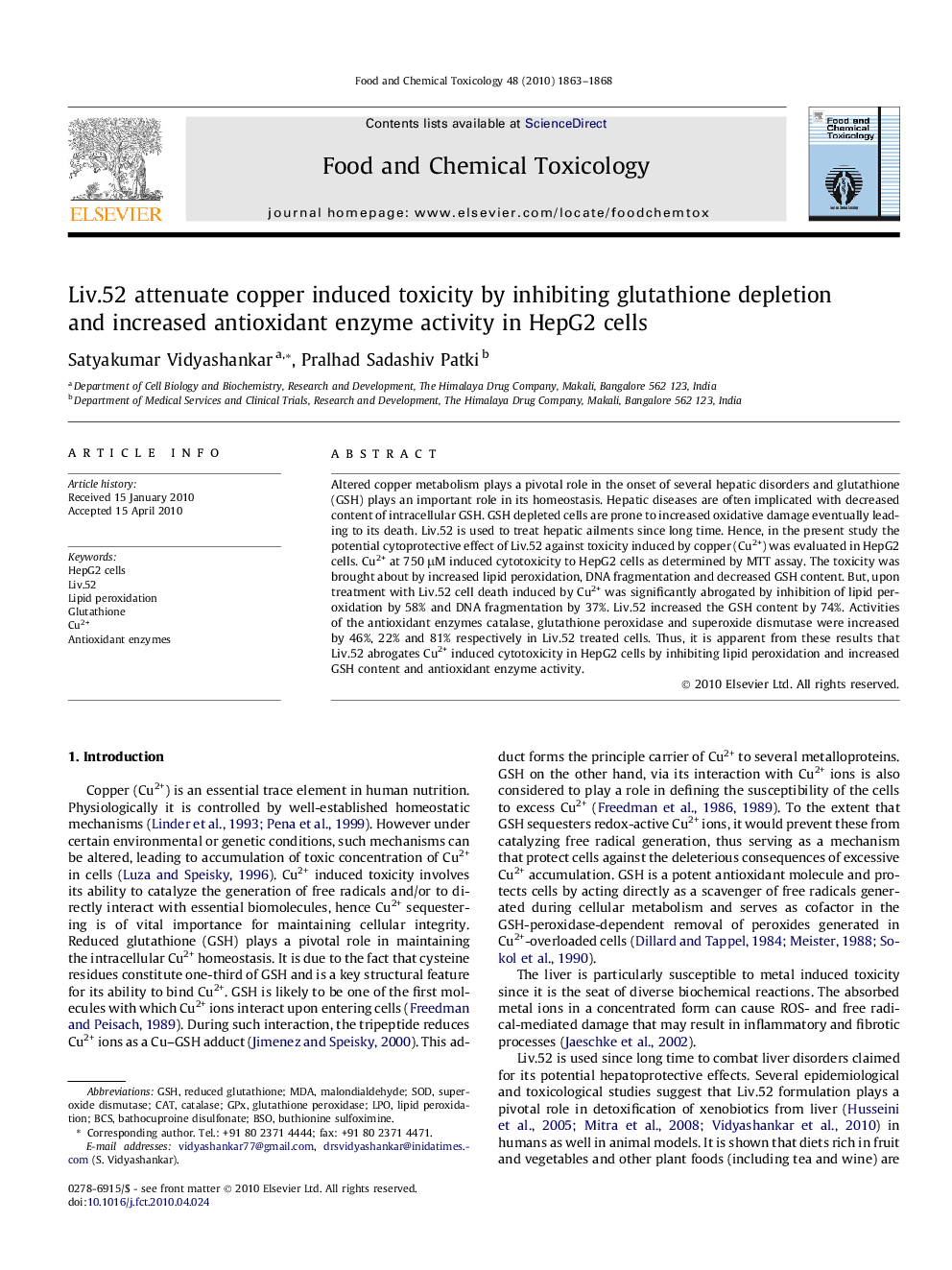| Article ID | Journal | Published Year | Pages | File Type |
|---|---|---|---|---|
| 2585739 | Food and Chemical Toxicology | 2010 | 6 Pages |
Altered copper metabolism plays a pivotal role in the onset of several hepatic disorders and glutathione (GSH) plays an important role in its homeostasis. Hepatic diseases are often implicated with decreased content of intracellular GSH. GSH depleted cells are prone to increased oxidative damage eventually leading to its death. Liv.52 is used to treat hepatic ailments since long time. Hence, in the present study the potential cytoprotective effect of Liv.52 against toxicity induced by copper (Cu2+) was evaluated in HepG2 cells. Cu2+ at 750 μM induced cytotoxicity to HepG2 cells as determined by MTT assay. The toxicity was brought about by increased lipid peroxidation, DNA fragmentation and decreased GSH content. But, upon treatment with Liv.52 cell death induced by Cu2+ was significantly abrogated by inhibition of lipid peroxidation by 58% and DNA fragmentation by 37%. Liv.52 increased the GSH content by 74%. Activities of the antioxidant enzymes catalase, glutathione peroxidase and superoxide dismutase were increased by 46%, 22% and 81% respectively in Liv.52 treated cells. Thus, it is apparent from these results that Liv.52 abrogates Cu2+ induced cytotoxicity in HepG2 cells by inhibiting lipid peroxidation and increased GSH content and antioxidant enzyme activity.
